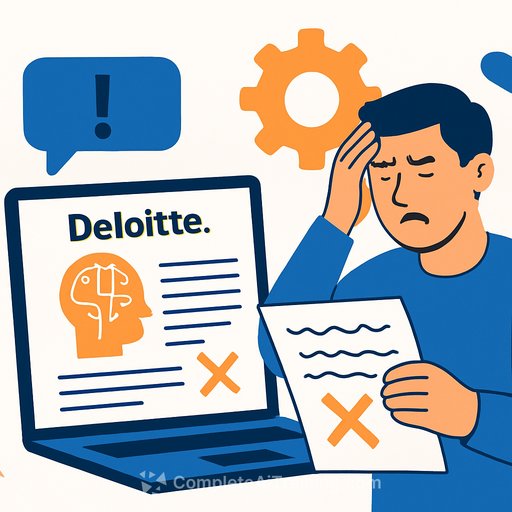Deloitte flagged for using AI in a federal report riddled with errors
A major consultancy was caught using AI to produce a federal government report that contained multiple errors. It's a warning shot for every agency that relies on external advice.
Government spends millions each year on consultancy deliverables that inform policy, funding, and service design. If AI is used without strict controls, incorrect outputs can slip into decisions that affect citizens and budgets.
Why this matters for government buyers
- AI can speed up drafting, but it can also invent facts and misquote sources.
- Without disclosure, agencies can't apply the right risk checks or approvals.
- Errors in public reports weaken trust and increase audit, rework, and reputational cost.
Immediate actions for procurement and contract managers
- Mandate AI disclosure: Require vendors to declare any AI tools used, where, and how outputs are validated.
- Quality gates in contracts: Include acceptance criteria for factual accuracy, citation checks, and SME review before submission.
- Human accountability: Name the accountable partner/lead who certifies the deliverable's accuracy.
- Evidence on request: Give the agency audit rights to see prompts, sources, draft history, and review notes for any AI-assisted sections.
- Data handling rules: Prohibit feeding sensitive or personal data into public AI tools and require logs for any model usage.
- Penalties and rework: Set clear remedies for undisclosed AI use, including rework at no cost and fee reductions.
Minimum standards for AI-generated content in deliverables
- Source-first drafting: All claims must link to verifiable sources; no unsubstantiated statements.
- Citation verification: Every reference is checked by a human and spot-audited by the agency.
- Model limitations noted: Disclose model type, known limits, and safeguards applied (e.g., hallucination checks).
- SME sign-off: A qualified subject-matter expert approves each section containing AI-assisted text or analysis.
Delivery controls for internal teams
- Two-pass review: One reviewer checks facts and data; another checks logic, structure, and policy alignment.
- Red flags list: Dates, numbers, legislation titles, agency names, and jurisdictional details require extra scrutiny.
- Change log: Track edits from draft to final, noting where AI suggestions were accepted or rejected.
- Plain-language test: If a claim can't be explained simply with a source, it doesn't ship.
How to communicate this to vendors
- Declare your AI policy at RFQ/RFT stage and restate in contract and SoW.
- Ask for their AI governance framework and recent QA failure rates.
- Run a short inception workshop to align on evidence standards and review cadence.
Policy references and guidance
Upskill your team
If your staff write, review, or procure AI-assisted work, build shared standards now. Consistent training reduces risk and speeds up reviews.
The signal is clear: AI can help, but only with strict guardrails. Push for transparency, set measurable quality checks, and keep a human accountable for every line that reaches a minister's desk.
Your membership also unlocks:






